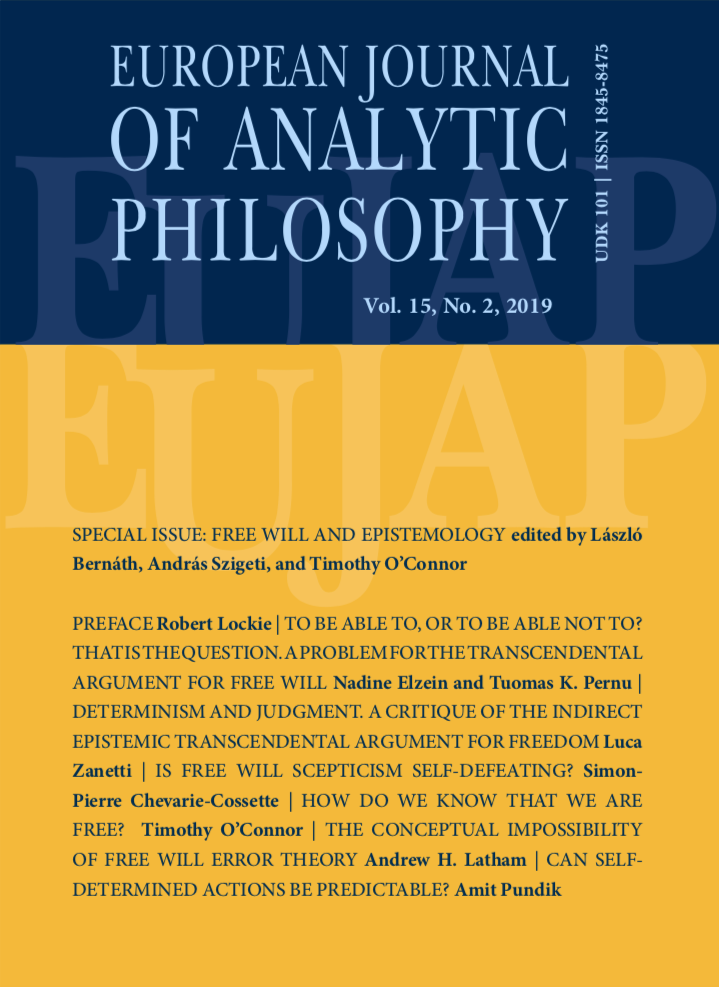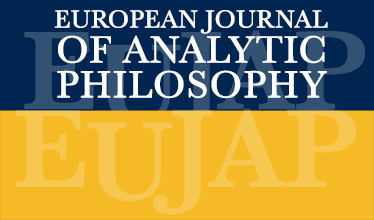BOOK REVIEW
John McMillan, THE METHODS OF BIOETHICS: AN ESSAY IN META-BIOETHICS, Oxford University Press, 2018 ISBN-13: 978-0199603756 ISBN-10: 0199603758 Download PDF
IVA MARTINIĆ (Faculty of Humanities and Social Sciences, University of Rijeka)
© 2020 Iva Martinić
With the advancement of bioethics, its formation as an interdisciplinary field and its separation from applied ethics, the question of its methodology comes to the forefront. John McMillan’s book Methods of Bioethics: An Essay in Meta-Bioethics focuses on this question. The book has 3 main parts: Bioethics—explaining the definition of bioethics and what “good” bioethics should entail; The Specter of Bioethics—explaining methods based on a theory-driven approach and fact/value distinction; and The Methods of Bioethics—in which McMillan gives various examples of explanations of empirical ethics, what ethical argument should be, the connection between speculative argument and bioethics, and an important way of accessing bioethics—Drawing Distinctions, which involves defining and analyzing moral concepts. In what follows, I will provide a summary of the chapters that, in my opinion, bring to the forth the main theses advanced by McMillan.
In the first chapter of Part One, McMillan does not define bioethics by necessary and sufficient conditions, but defines it by listing the essential goals, questions, and characteristics of bioethics. He introduces bioethics as a broad field that includes areas such as research ethics, philosophical bioethics, empirical bioethics, and public health-medical ethics. He also emphasizes the connection between bioethics and policy making and the fact that bioethicists in public policy making should be sensitive to moral implications that ethical views have when applied to law. In addition, as far as academic bioethics is concerned, McMillan warns of its possible inapplicability to bioethics because of the methodology and topics covered. In doing so, McMillan questions ways of doing bioethics that rely on standard normative theories such as utilitarianism, virtue ethics, deontology, including those based on theological considerations, thereby diminishing a possible interdisciplinary approach to moral phenomena in practical and complex situations. McMillan argues that the main goal of bioethics is to apply moral reasoning to practical issues with the goal of devising normative recommendations that will address the problems confronted by patients, doctors, and the interested public.
In Chapter Three, McMillan seeks to distinguish the definition of bioethics as an interdisciplinary field from what constitutes “good” bioethics. McMillan proposes that moral reasoning, understood as a process in which practical moral questions and relevant facts are extrapolated and subjected to normative arguments, should be the main method of good bioethics. Moral reasoning in bioethics involves not only philosophical theorizing about ethics, but it also relies on norms grounded in legal systems and professional contexts that are essential for solving practical problems. Thus, McMillan emphasizes practical normativity as a necessary feature of good bioethics because it contributes to understanding and problem solving.
McMillan summarizes the history of debates in bioethics by reflecting on the main ideas brought by these debates. With respect to the discussions of bioethics, McMillan concludes that bioethics involves: interdisciplinary research, the application of moral reasoning, the structure of different fields of work, and most importantly, the education of the reader on methodological skills in direct practice, which is also the purpose of this book.
In the second part of the book, McMillan looks at different views on bioethics – The Moral Mantra and the Tedious Theory Tendency, The Ethics Sausage Machine, Philosopher Kings and Other Queens of the Sciences. The moral mantra signifies the tendency of bioethics to be laden with the shadows of different approaches. That is, McMillan believes that normative moral theories are not so useful in applied ethics because concentrating only on action that are motivated by moral principles can be restrictive of bioethics. Thus, in the section, The Moral Mantra and the Tedious Theory Tendency, McMillan emphasizes the privileged status of normative moral theories as a major problem. In addition to utilitarianism, deontological ethics, theology, and virtue ethics, more recent theories such as empirical, feminist, and narrative ethics also do not facilitate the pursuit of bioethics. McMillan draws such conclusions primarily from the four principles enacted in the 1970s by Tom Beauchamp and James Childress – who sought to unify the moral theories into 4 fundamental principles (autonomy, justice, beneficence, and non-maleficence) that would serve as a framework for delivering ethical justification.
According to McMillan, theory-driven approaches, such as deontological ethics, utilitarianism, and theology, pose a threat to bioethics because they might include other premises that contradict our normative intuitions. This is a problem McMillan calls the “Ethics Sausage Machine”. If we do not accept the whole “machine” (e.g. utilitarianism) we will not accept the “sausage” (arguments based on the theory).
McMillan believes that too much theory in bioethics can weaken our moral intuitions, and as examples of this he criticizes utilitarianism as expounded by Peter Singer, Pope Paul VI’s Humanae Vitae, and different deontological approaches. McMillan argues that theoretical approaches rely on premises that are not practically useful for specific bioethical issues. The next problem includes philosophers who think they are always right because they think they possess the methodological key to solving bioethical issues. In this regard, McMillan points out that bioethics is not only about philosophy because philosophy is not the only discipline that can deal with bioethics and the usefulness of moral theory is often over-emphasized. An approach without a specific, privileged demand for a particular theory (without special pleading) is required, and one must strive for progressive interdisciplinary work rather than isolated work of different disciplines.
McMillan’s further discussion extends to the fact/value distinction in which he covers logical positivists, Hilary Putnam, the Humean distinction between is and ought statements, and Moore’s naturalistic fallacy. McMillan builds on Putnam, pointing out that bioethical concepts ignore the distinction between facts and values, because sometimes they are taken as descriptive while at other times they are used as normative concepts. McMillan agrees with this and criticizes the passing of laws based on what people think and concludes that if ethics is nothing but subjective feeling of an individual and says nothing about the world then public opinion survey is suitable for bioethics. The weakness of McMillan’s claim is that he does not explain the reason why only experts should do bioethics, nor does he say who the experts are. McMillan mentions the conceptual approach as wanting in certain respects. When it comes to the conceptual approach, as opposed to the empirical approach to bioethics, McMillan favors the latter because the conceptual approach as a purely theoretical endeavor might not be taken seriously enough by all the relevant parties involved in a bioethical issue. This also calls for the empirical involvement in bioethics as the way forward.
In Chapters 6 through 10, McMillan introduces the methods of Speculative Reason and Drawing Distinctions. Given these methods, McMillan suggests that bioethics should be rigorous and systematic and that it must be practically normative and empirical. Drawing Distinctions is a fundamental method in law and sociology and in any discipline that relies on distinguishing and clarifying concepts that play an important role in discussions or in problem-solving. By combining Socratic speculative reason and conceptual analysis, McMillan’s view becomes more akin to the methodology of analytic philosophy. Thus, it may be unclear to non-philosophers but also non-bioethics practitioners how exactly all of these disciplines will contribute to producing a “good bioethics” argument. It seems that the explanation of exactly how in practice bioethics embraces different methodologies of medicine, sociology, law and philosophy, and what exactly is their job, seems to be missing. This methodology does not necessarily tell us what to do but to act with caution in how we act. In addition to these methods, McMillan cites examples of constructing ethical syllogisms, counterexamples, introducing moral concepts, transcendental distinction, slippery slope arguments, and so on.
In chapter nine, McMillan uses a series of examples to demonstrate how his way of doing bioethics might be applied in practice. This chapter emphasizes cases where interdisciplinary bioethical skills might be usefully applied. To illustrate this point, McMillan uses as examples the concept of “futility” of treatment in the euthanasia debate and a 2013 New Health Inc. case where there was a complaint about unlawful adjustment of intake of fluoride into drinking water. With these examples, McMillan emphasizes the importance of drawing distinctions that signify important moral differences. As one of the more sophisticated argumentative strategies, McMillan points out that sometimes a concept does not imply what one thinks it does. Clarifying an ambiguous concept usually involves considering possible ways in which the concept might be interpreted, and then checking whether the concept is performing the needed normative work.
In general, McMillan indicates that the book was written for beginners who want to study bioethics as well as those who are more familiar with bioethics and are interested in expanding their knowledge. I tend to agree with these views. I would like to add that the detailed descriptions of empirical case studies in the book provide a good overview for those who wish to pursue bioethics without a background in philosophy. In addition, many examples of McMillan’s arguments can serve as a template for teachers to work with students of philosophy because they put emphasis on problematic research and argumentation that are based on real-life situations. This book can also be used to connect students of philosophy with students of medicine, law, sociology and history, with the aim of jointly exploring problematic practical situations. Thus, I highly recommend it to anyone who is interested in learning more and/or teach about the methodologies of bioethics.


